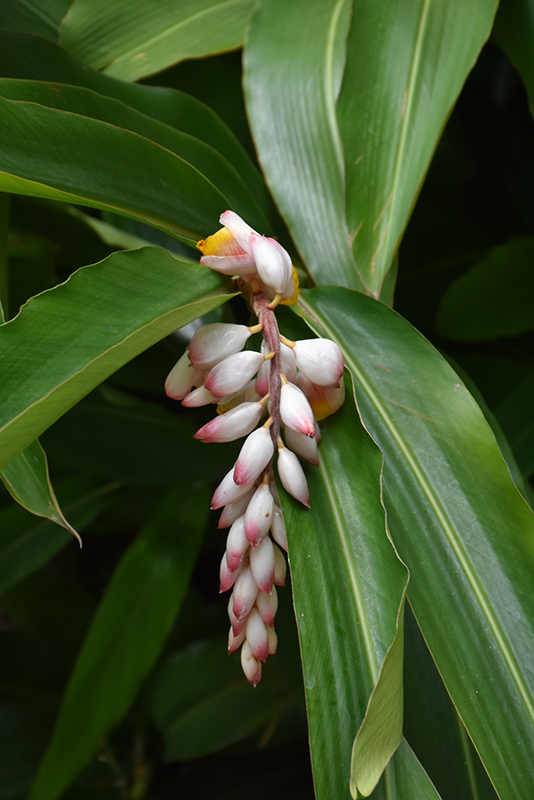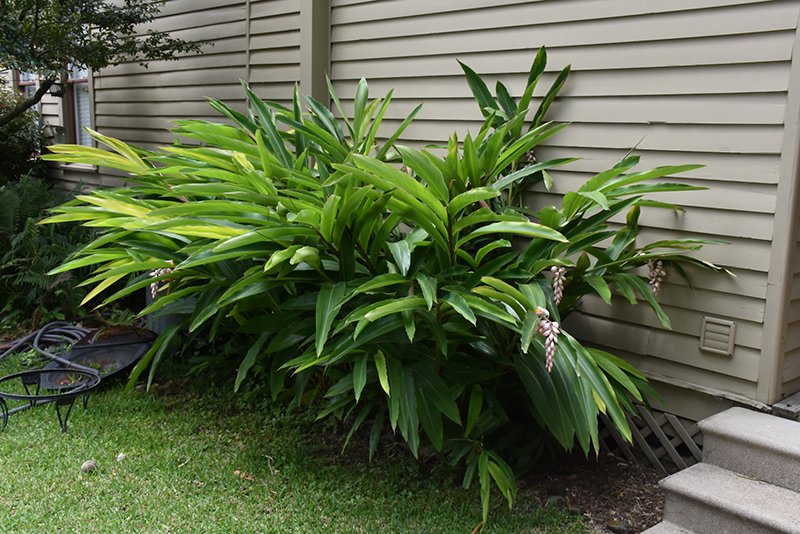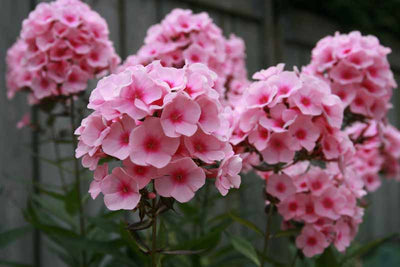Plant Library
Height: 4 feet
Spread: 4 feet
Sunlight:
![]()
Hardiness Zone: (annual)
Description:
A root spice that is consumed worldwide for culinary and medical purposes; long elegant leaves unfurl from pseudostems and arch gracefully; seasonal clusters of white buds open to reveal pale yellow and crimson flowers; great for herb gardens or borders
Edible Qualities
Common Ginger is an annual herb that is typically grown for its edible qualities, although it does have ornamental merits as well. It produces tan oblong roots with yellow flesh which are typically harvested when mature. The roots have a potent taste with a hard texture and a distinctive fragrance.
The roots are most often used in the following ways:
- Cooking
- Baking
- Seasoning
- Tea
Planting & Growing
Common Ginger will grow to be about 4 feet tall at maturity, with a spread of 4 feet. It has a low canopy with a typical clearance of 1 foot from the ground. Although it's not a true annual, this fast-growing plant can be expected to behave as an annual in our climate if left outdoors over the winter, usually needing replacement the following year. As such, gardeners should take into consideration that it will perform differently than it would in its native habitat.
This plant is quite ornamental as well as edible, and is as much at home in a landscape or flower garden as it is in a designated herb garden. It should be grown in a location with partial shade or which is shaded from the hot afternoon sun. It is quite adaptable, prefering to grow in average to wet conditions, and will even tolerate some standing water. It is not particular as to soil pH, but grows best in rich soils. It is somewhat tolerant of urban pollution. This species is not originally from North America. It can be propagated by division.
Common Ginger is a good choice for the edible garden, but it is also well-suited for use in outdoor pots and containers. Because of its height, it is often used as a 'thriller' in the 'spiller-thriller-filler' container combination; plant it near the center of the pot, surrounded by smaller plants and those that spill over the edges. It is even sizeable enough that it can be grown alone in a suitable container. Note that when growing plants in outdoor containers and baskets, they may require more frequent waterings than they would in the yard or garden.






